If you are in a place where you cannot enjoy hiking at will, consider our 9 days Hong Kong hiking tour! Hong Kong, a prosperous international metropolis, boasts numerous famous tourist attractions for anyone who is looking for hiking destinations, such as the Wong Tai Sin, Victoria Peak, and Dragon’s Back. With smooth transportation and magnificent landscape, Dragon’s Back is the first choice for many people to go hiking in Hong Kong. Furthermore, this 9-day hiking tour starts from Beijing, the capital of China. In this famous city, the Tian’anmen Square and the Great Wall will amaze every visitor with their everlasting glory. Our hiking tour from Beijing will also allow visitors to deeply feel the life, culture, and history of Beijing by taking them to Hutongs (alleys unique to Beijing). What’s more, our China hiking tour to Hong Kong provides standardized services including hotel reservation, dining arrangement, scenic spot introduction, translation, and so on.

Beijing is rich in tourism resources, with more than 200 tourist attractions open to the outside world, including the Forbidden City (the world’s largest imperial palace), the Great Wall, and so on. It is also a popular trekking destination for hikers. Our China hiking tour from Beijing will allow us to enjoy both the fun of hiking and the beautiful scenery of Beijing. When you arrive in Beijing by plane, our friendly guide will meet you at the airport and take you to the hotel in downtown Beijing. The tour guide will also help you with hotel check-in. For the rest of the day, you are free to arrange your activities.
Today, we will first visit Tian’anmen Square in the center of Beijing after breakfast. As the largest city square in the world, Tian’anmen Square has experienced more than 500 years of vicissitudes. On October 1, 1949, it witnessed the founding of the People’s Republic of China. Since then, Tian’anmen Square has become a symbol of the new China. Standing on this grand square, you can easily find the Tian’anmen Gate Tower. With a height of about 37 meters, this gate tower is built on a vast platform made of huge rectangular stones. It looks like a majestic Buddhist temple, with red walls, golden tiles, and five arch gates. Now you can see that the national emblem of the People’s Republic of China is hanging right in the middle of the eaves of the Tian’anmen Gate Tower. Below the national emblem, you will notice the portrait of Chairman Mao. Under the Tian’anmen Gate Tower, you can also find that large slogans on banners, saying “Long live the People’s Republic of China” and “Long live the great unity of the people of the world”.
Keeping going north along the Tian’anmen Square, we will come to the Forbidden City, also known as the Palace Museum (Closed on Mondays). With more than 70 palaces and 9,000 rooms, the Forbidden City is a huge national museum of imperial treasures of the Ming (1368-1644) and Qing(1636-1912) Dynasties. One of the highlights of the Forbidden City is its palaces, which can be divided into north and south parts on the whole. In the south part, you can see the Outer Court that used to be the area where the Chinese emperors handled government affairs. The Outer Court takes the “three main halls” as its core, namely the Halls of Supreme Harmony, Central Harmony, and Preserving Harmony. Moreover, the Hall of Supreme Harmony is one of the largest existing wooden structures in China. During the Ming and Qing Dynasties, grand ceremonies were held here, such as the emperor’s accession to the throne as well as the emperor’s wedding. In addition, we provide the best route to visit the Forbidden City to save your time. You can rest assured to follow our guide and listen to him or her to introduce the history, recent situation, and treasure collections of the Forbidden City.
After lunch, we will go to see Hutong, an ancient urban alley unique to Beijing. There are thousands of Hutongs around the Forbidden City in Beijing. Most of them were formed in the Yuan (1271-1368), Ming, and Qing Dynasties in Chinese history. Tourists can choose to visit the Hutong by taking a rickshaw, a traditional means of transportation in old Beijing (each can seat two persons). If you want to know more about the life of the people in old Beijing, Hutong family visit is a good choice. The rickshaw will take you to a quadrangle that has served as the dwelling place of the Beijingers since ancient times. Following our guide to the courtyard of the quadrangle, you will find that there are houses on each side, with several small kitchens built of red bricks. Walking around here is a good way for you to understand Beijing’s traditional culture and local customs and practices.
Later, we will come to the 798 Art Zone, a very suitable place to slow down your pace. The rise of the 798 Art Zone began with a group of artists from the periphery of Beijing in the early 21st century. At first, this art zone used to be the location of the state-owned 798 Factory and other old electronic industrial factories in Beijing. The first person who connected the 798 Factory with art was actually an American named Robert Bernell, a foreign promoter of Chinese contemporary art. Robert ran an art website to introduce Chinese contemporary art to foreign countries at that time. In February 2002, he moved the office to 798 Factory in order to better maintain the operation of his website. Some of Robert's friends had also taken advantage of the spaciousness and low rent and rented some of the factories as studios or showrooms. Later, the factory become an art zone and attracted more artists due to its orderly planning and unique architectural style. Up to now, 798 Art Zone encompasses art exhibitions, famous studios, large exhibition halls, theatres, as well as catering and entertainment. Here, you can walk into the exhibition hall to see the exquisite works of art or stop in front of the famous paintings to appreciate their beauty. Of course, you can just walk leisurely while watching the distinctive roadside art statues.
After the visit, we will come back to the hotel in downtown Beijing.
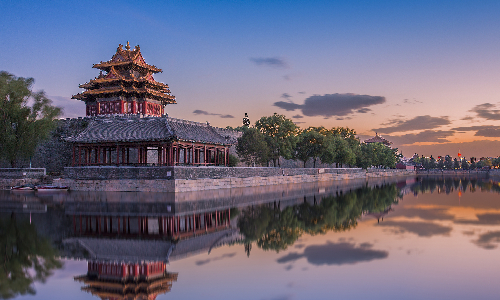
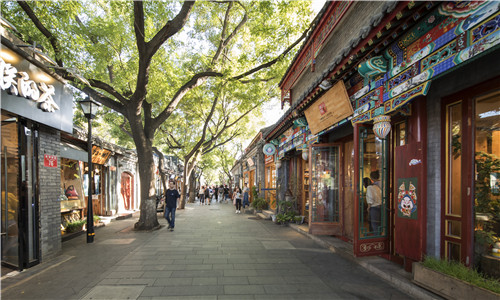
 Jinshanling Great Wall
Jinshanling Great Wall After breakfast, we will drive northeast from downtown Beijing to the Jinshanling Great Wall for about 3 hours (190KM). The Jinshanling Great Wall, which was built in 1368, is the core part of the Great Wall. Sitting on high mountains and vast forests, it is suitable for hiking and photography in all seasons. In addition, with a history of more than 400 years, it has experienced earthquakes and wars. But it has maintained its original appearance due to the government’s protection. More than 1,000 precious cultural relics of scientific research value on the Jinshanling Great Wall have been unearthed by archeologists and cultural relics protectors. Some of the relics are the weapons and ammunition used by the garrison soldiers in the Ming Dynasty. Meanwhile, some are daily necessities for garrison soldiers, such as stone mortar, kitchen knife, oil lamp, porcelain bowl, copper coin, etc. During this Great Wall Hiking tour, you can also learn more details about its cultural and archeological values from our guide.
Then, we will keep hiking to the Simatai Great Wall. With a total length of 5.4 kilometers, the Simatai Great Wall has 35 towers. These well-protected and dense towers have formed a sound military defense system. Among these towers, the most beautiful one is the Fairy Tower that is surrounded by the flowers and trees in the mountains. Moreover, you can listen to the story about it while hiking on the Great Wall. It was said that there was no lotus in the mortal world. And the lotus could only be found in the heavenly palace. One day, while the Lotus Fairy was sowing seeds, a sudden gust of wind blew a lotus seed down to the mortal world. It just so happened that a lotus seed fell in the mountain spring near the Simatai Great Wall. So, the fairy came down from the heavenly palace to the mortal world to look for this seed. But when she arrived at the Simatai Great Wall, the fairy fell in love with the vibrant and colorful beauty of the mortal world, especially the magnificent Simatai Great Wall. So, she chose the most beautiful tower to live in and did not go back to the heavenly palace any longer. Later, this tower was named the Fairy Tower. If you sing inside the Fairy Tower, you can hear echoes pleasing to the ear.
After the visit today, we will stay in Beijing Water Town next to the Simatai Great Wall for one night.

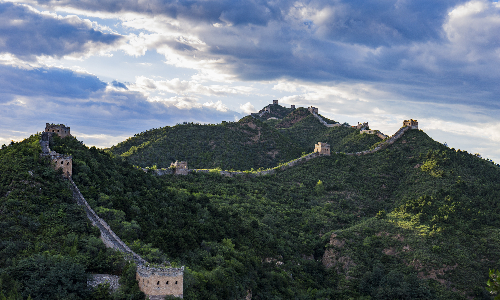
 Xi’an
Xi’an Today, you will check out after breakfast. Then, you will take the estimated flight HU7237 11:00/13:20 to Xi’an after the tour guide sending you to the airport. Upon your arrival in Xi’an, your guide will welcome and lead you to the hotel in Xi’an to rest.
Xi’an has a total area of 10,108 square kilometers, with a permanent resident population of about 13 million. It was called Chang’an in ancient times. As the earliest ancient capital of China, Chang’an has been the capital of 15 Chinese Dynasties. In addition, today’s Xi’an has become a destination for many tourists because of its rich historical and cultural sites. Let’s follow our guide and start a wonderful trip to Xi’an.
Today, we will drive east for 40 minutes (40KM) from Xi’an urban area to the Terra Cotta Warriors and Horses Museum. In this museum, you can see numerous pottery statues in the shape of warriors and horses. Actually, they serve as the funerary objects of ancient tombs and are neatly arranged in three 5-meter-deep pits. Besides, you can find the treasure of this museum, the Bronze Chariot and Horses, which is the bronze ware of the Qin Dynasty (221-207 BC). This bronze ware was made in imitation of real warriors and horses of the Qin Dynasty. Looking closer, you will find that there are four bronze horses in front of the chariot with a high copper umbrella. Under the umbrella stands a terra cotta warrior. Its complex structure and vivid details highlight the high level of Chinese bronze casting technology at that time.
After lunch, we will visit the Small Wild Goose Pagoda(Closed on each Tuesday). With a history of thousands of years, the Small Wild Goose Pagoda is a representative brick pagoda in early China. It is about 43 meters high. It was originally 15 stories high, and the top two floors of the pagoda had been destroyed in an earthquake. At present, it has 13 stories. The origin of the Small Wild Goose Pagoda goes back to the Tang Dynasty (618-907). At that time, Buddhism flourished in China, leaving many Buddhist historical sites here. Among them, the Small Wild Goose Pagoda was used to store Buddhist scriptures brought back from Tianzhu (Ancient India). Therefore, it is inseparable from Buddhist culture. Today, you are welcomed to this quiet yet vibrant pagoda to further explore its history and culture.
Later, we will go to see the Xi’an Old City Wall, a famous tourist attraction in Xi’an. It can be called the pride of Xi’an because it protected thousands of people from wars in past dynasties like a guardian angel. According to archaeological materials, this city wall has experienced frequent wars and five major repairs since the Sui and Tang Dynasties (581-907). A series of military facilities, such as towers, moats, and suspension bridges were installed on the city wall to facilitate dispatching troops and investigating the enemy during the war. Today, you can climb this city wall and overlook the street view of this charming city.
After that, we will head back to the hotel in downtown Xi’an for a good rest.
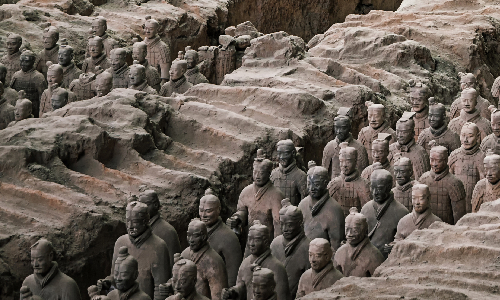
 Hong Kong
Hong Kong After breakfast, you will be transferred to the airport in Xi’an and fly to Hong Kong. Then, our tour guide will pick you up at the airport in Hong Kong and take you to the hotel in downtown Hong Kong to rest.
Hong Kong, located in South China, is one of the most prosperous international metropolises in the world. Its territory is mainly composed of Hong Kong Island, Kowloon Peninsula, and the New Territories, with a total land area of about 1,104 square kilometers. At present, it has a population of over 7 million, with a population density ranking the third in the world.
Today, we will visit the Wong Tai Sin Temple after breakfast. Whether you want to pray for good luck or stay away from the noise and meditate, Wong Tai Sin Temple is a very suitable place to go. The immortal worshipped in this temple is well-known for curing diseases and wounds and giving universal aid and good advice generously. If you have doubts or wishes, you can ask this immortal by shaking the bamboo sticks in the lot pot until one of the bamboo sticks falls out. The scripture on the bamboo stick is the response of this immortal.
Then, we will go to Sky Terrace 428, which is 428 meters above sea level, for sightseeing. It is on the top floor of the Peak Tower on Victoria Peak in Hong Kong. The Peak Tower is seven stories high, with an appearance resembling the shape of a bowl. By the way, the best way to reach Peak Tower is to take the Peak Tram. When you come to Sky Terrace 428, you can enjoy the view of Victoria Harbor in the north. You can count how many high-rise buildings there are and watch the ships coming and going.
The next stop is Repulse Bay in the south of Hong Kong Island. This bay is blessed with a gentle slope, a long beach, flat waves, and fine sand. The water temperature here is between 16℃(60℉) and 27℃(80℉). It has always been a resort for Hong Kong people to spend the summer. Besides, it is surrounded with luxury houses and buildings due to its beautiful beach scenery. These buildings constitute a unique scenery of Repulse Bay, which is sure to make you linger and forget to leave.
Later, we will come to the Tin Hau Temple behind Repulse Bay. Wherever you go in Hong Kong, you can always see a Tin Hau Temple nearby. What kind of God is Tin Hau? Why have so many Tin Hau Temples been built in Hong Kong? In fact, Tin Hau is a sea goddess believed by people on the southeast coast of China and all over the coastal areas of East Asia. She had the special ability to predict the weather since childhood and saved countless people in distress at sea. Coastal villagers and fishermen in Hong Kong built temples to worship Tin Hau and pray for good weather and a good catch of fish. Today, in the Tin Hau Temple behind Repulse Bay, you can find more information about this sea goddess.
After that, we will drive to the Stanley Market, which is seated in a beautiful town full of exotic atmospheres in the south of Hong Kong Island. In this market, you can find all kinds of souvenirs, distinctive clothes, leather handbags, toys, antiques, and so on. Many tourists who have visited here recommend the bookstore at the entrance. This artistic bookstore sells a wide variety of books, postcards, and refrigerator stickers. Here is a piece of advice: you can bargain with the seller when shopping in this market.
After the visit to the Stanley Market, we will move back to the hotel in downtown Hong Kong.
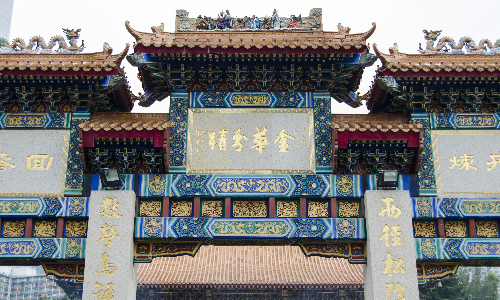

This morning, we will drive southeast from downtown Hong Kong to Shek O for about 25 minutes (20KM) after breakfast. Then, we will begin hiking up the mountain, the Dragon’s Back, from To Tei Wan, Shek O. This Hong Kong Hiking Tour will last for about 3 hours (about 8 kilometers). After walking through a section of shady track, you can see the beautiful scenery of Lantang Strait. Along the hiking trail down the mountain, you can come to the beach of Big Wave Bay to bask in the sun or swim.
After hiking on the Dragon’s Back, we will return to the hotel in downtown Hong Kong.

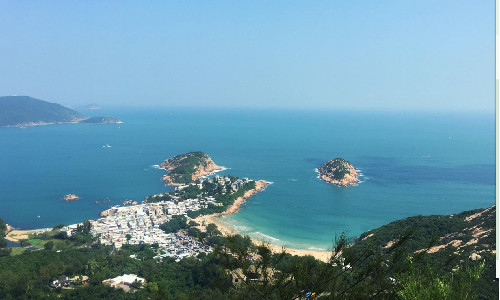
After breakfast this morning, you can get ready to depart from China by taking a plane from Hong Kong airport. Have a good time hiking in China!
Author:Yan Weiran
Proofreader: Lexie
| City | Five Star hotel list | Four Star hotel list |
|---|---|---|
| Beijing | Sunworld Dynasty Hotel Beijing Wangfujing | Sunworld Hotel Wangfujing |
| Beijing Water Town | Beijing Water Town Hotspring Resort | Water Town Hotel |
| Xi'an | Tianyu Gloria Grand Hotel Xi'an | Sunworld Dynasty Hotel |
| Hong Kong | Harbour Grand Kowloon | Harbour Plaza North Point Hotel |
 |
![]() About your child or infant, please contact us for a discounted price.
About your child or infant, please contact us for a discounted price.



We started with a few days in Beijing & ended in Shanghai, from where we visited the Forbidden City and Great Wall. In between we visited Terra Cotta Warriors Museum, Panda Base, Shanghai Disneyland.

We had a wonderful holiday in China which will remain long in the memory. China is a breathtakingly beautiful country full of splendid temples and palaces, mountains and rivers, peaceful rural scenes and bustling shopping streets.
 QUICK ENQUIRY
QUICK ENQUIRY